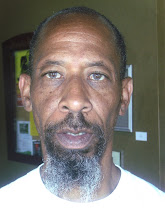Homelessness
Introduction to the Literature on Homelessness
Homeless black men were not given much attention in the past review (Gordon, Gordon, & Nembhard, 1994). Homelessness is a gendered phenomenon, with an estimated 80–90% of the indigent population being male (Baker, 1994). An estimated 49% of the homeless population in the U.S. is African American; therefore, the concerns of homeless black men must not be overlooked because there is a strong association between employment and homelessness for African American men. Scholars attribute the rise in homelessness to a number of structural economic and geographical shifts. The movement of skilled “blue collar” labor from central cities to suburbs and other nations represents a shift to a service-oriented economy in the United States, caused largely by deindustrialization, and has impelled a rise in poverty levels (Molina,2000). The reclamation and gentrification of low-cost housing by businesses and people has lead to a decline of 2.5 million low-income housing units between 1980 and 1988 (National Academy of Sciences, 1988 as cited in Baker, 1994) and the displacement of residents from their neighborhoods. The long-term effects of Reagan-era cuts to public housing and domestic welfare programs are unfolding yielding low levels of supply in affordable housing (National Housing institute, 1992, as cited in Molina, 2000). The decline in affordable low-cost housing during the 1980s was particularly devastating to African Americans, who represented close to half of those living in such units (Baker, 1994).
Future Research Directions: Incarceration and Juvenile Justice
Strategies to disrupt the school-to-prison pipeline should be research-based.
The ways black men have been constructed as targets of pubic policy should be
examined.
Rehabilitation options in community-based programs for youth offenders should be
explored.
An audit should be conducted of private correctional institutions to determine the
physical conditions of the inmate population and the effectiveness of inmate
rehabilitation programs in these institutions.
The positive impact of drug courts should be studied.
a. Risk Factors Among Homeless African American Men
The social isolation experienced by homeless men has a number of damaging effects on their health and well-being. Several studies identified an increased risk of acquiring HIV/AIDS among the homeless. Minorities, who constitute a large percentage of the homeless, are the fastest growing population of HIV-positive cases, a phenomenon researchers ascribe to lack of cultural sensitivity among safe sex campaigns and a disproportionate lack of healthcare (Stephens, Braithwaite, Lubin, Carn, & Colbert, 2000). High levels of HIV/AIDS vulnerability among the homeless are attributable to unsafe sexual practices, often caused by the conditions of poverty. Homeless commercial sex workers reported that they were more likely to engage in higher risk sexual activity when homeless and/or hungry. African American homeless men reported willingness to trade sex for money or drugs at the rate of 44% (Song, 1997), a number the researchers felt may have been underestimated due to the self-reported nature of the study. Other studies on risk factors for homeless black men have focused on depression and substance abuse (Beck, 1999, 2001 & Bolger et al., as cited in Littrell and Beck, 2001; Dixon, 1997).
Policy Recommendations
Molina (2000) suggests a national policy dealing with the problem of homelessness, first and foremost creating new low cost housing and providing subsidies for low-income
single men and women to provide short term assistance while readying impoverished individuals to find new jobs.
Littrell and Beck (2001) suggest treating depressive symptoms in the homeless, identifying and addressing causes of depression and encouraging problem-focused coping to encourage faster transitioning from homelessness.
As previously mentioned, the attitudes and beliefs of the homeless populations may not translate to safe sexual practices (Song, et al. 1997). Kalichman and colleagues (1998) suggest that HIV risk reduction techniques should be integrated into substance abuse treatment programs.
Community services and assisted living should be made available for black homeless men.

No comments:
Post a Comment